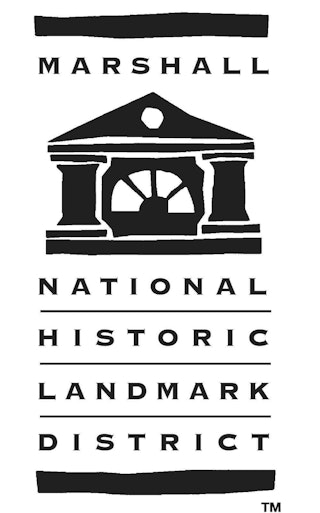
Brooks
In 1912, Harold C. Brooks took over his father’s business, Brooks Rupture Appliance Company.
The Marshall Historic District comprises an outstanding collection of remarkably intact nineteenth and early twentieth century architecture in a small-scale American city.
Today, Marshall is most famous for being the home of the largest National Historic Landmark District in the small urban category in the entire United States. With over 800 buildings, Marshall’s district is known throughout the United States as being a virtual encyclopedia of America’s most popular styles during the nineteenth and early twentieth centuries. The architectural styles that can be found in Marshall include Greek Revival, Gothic Revival, Italianate, Italian Villa, Queen Anne, Colonial Revival, Beaux-Arts Classical and Art Deco.

The city once served as the bustling commercial, political and social center of the surrounding agrarian region. The district is a virtual encyclopedia of America’s most popular styles during the nineteenth and early twentieth centuries. Most houses are built of wood, but many are executed in brick or yellowish-brown Marshall sandstone quarried locally.
1991, National Historic Landmark
1830-1930, era in which buildings were constructed

Brooks
In 1912, Harold C. Brooks took over his father’s business, Brooks Rupture Appliance Company.

Railroad, Interurban, & Stagecoach Road
Surveyors in the early 1800s enlarged the St. Joseph Indian trail, originally only about a foot wide, to create the Saint Joseph Road.

Underground Railroad & Crosswhite
In 1846, slave catchers tried to capture escaped slave Adam Crosswhite and his family in Marshall to return them to their owner in Kentucky. Instead, the citizens of Marshall arrested the slave…

Education Oak
A stately oak was the location chosen by the Rev. John Pierce and Isaac Crary for their discussions of the founding of the education system for the territory that was to become…